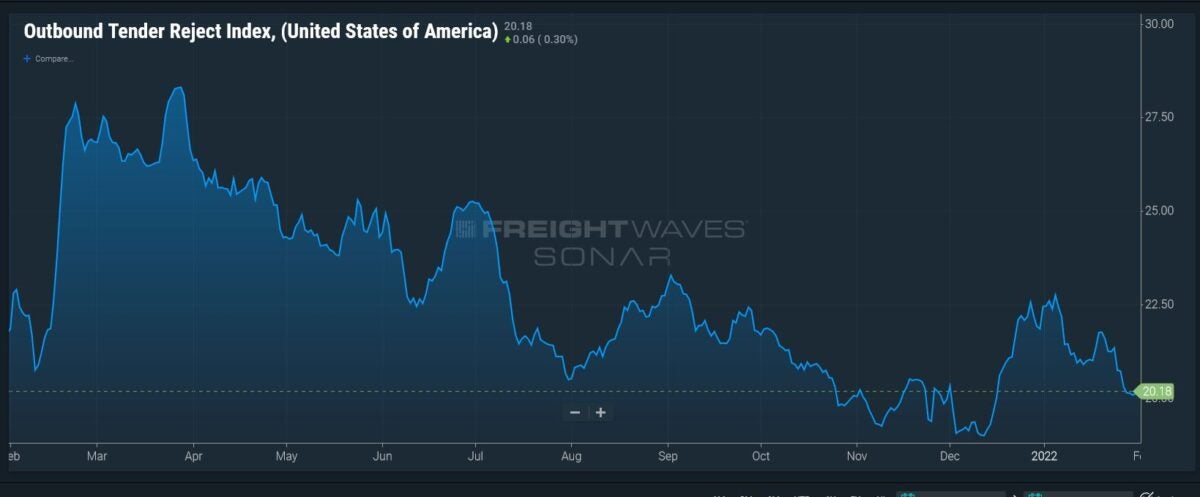CEO Max Farrell had a message for employers during a recent webinar about the driver feedback WorkHound compiled in 2021: “Getting training right can make a big difference.”
Farrell, in releasing the results of the feedback Workhound had received over the course of last year, said many of the comments about training tie into the big challenge of driver retention. If there are problems at the start, that does not bode well for retention later.
“You have to take care of people early if you want to keep them around over the long haul,” he said.
The average length of comments about training was 361 characters, compared to an average of a little over 200 characters for all comments.
“The longer comments are worth paying attention to because usually they are critical,” Farrell noted.
WorkHound compiles “anonymous real-time feedback from thousands of frontline workers via regular text messages,” he said, to find out “what they feel and how work is going.”
The data and responses WorkHound receives are transmitted to trucking clients quickly “to help carriers create a real-time feedback loop,” Farrell said.
The link is live 24 hours a day and the comments come from cellphones. Most of the feedback, Farrell said, takes 90 seconds or less to submit. WorkHound does not send out surveys.
“Surveys by nature introduce bias,” Farrell said during the webinar. “This is not a survey. We ask one open-ended question so they can introduce their honest concerns.”
The WorkHound process starts from the base assumption of anonymity. But Farrell said that occasionally a comment will spur a client to seek the identity of the respondent so a specific concern can be addressed. With the driver’s permission, that anonymity can be lifted.
Additionally, a company can use the WorkHound system to send a specific solution to a respondent while leaving that employee anonymous, Farrell said.
Farrell said during 2021, WorkHound received more than 62,000 responses from 21,000 workers, for an average of 2.97 responses per worker. The overall satisfaction level with their jobs, on a scale of 1 to 10, was 6.7.
Of the comments submitted, almost 10,400, or 16.5%, were described as “critical.” And when somebody’s got something critical to say, he or she takes more time to do it — the average critical comment was 314 characters in length, while the average length of a noncritical comment was 214.
Unhappiness with the onboarding experience is significant enough that the overall satisfaction score given to training, when combined with the issue of communication, was 5.11, far less than the overall satisfaction score for all of the answers.
“When training and communication were combined, they felt like the orientation was unorganized or the trainer wasn’t equipped or was overwhelmed,” Farrell said.
Onboarding, he said, “is a very clear-cut way to improve the driver’s first impressions.”
That’s where communication comes in. “Align expectations,” Farrell said. “Make sure the drivers are receiving consistent and realistic expectations.”
While training was a key area, among the comments that were deemed critical, pay was the largest area, coming in at 17.2%. And that goes back — again — to communication.
Farrell said the size of an employee’s paycheck was not the main topic under that category. The complexity of truck driver pay was the biggest concern.
“The top issue for pay is that people don’t understand it and they feel like it is incorrect,” Farrell said, describing truck driver pay as “the most complex in North America. There are so many variables to determine how much they take home at the end of the week.”
Asked a question about whether he saw companies moving to non-mileage-based alternatives, like salaries, Farrell said the best thing the industry could do would be “to make pay simple and easy to understand.”
Farrell also expressed skepticism about big signing bonuses, which he described as “sugar water.”
“They may have a big impact at first, but at a certain point the goodwill wears off,” he said. When it does, the company that paid out the bonus needs to determine if the cost/benefit balance of those bonuses is worth the expenditure.
One notable finding from the WorkHound numbers is that drivers at smaller companies, those with up to 199 employees, appear to be happier than those at large ones with 500 employees or more.
The number of comments that fit under the category of praise rose over the course of the year. “Praise went way up in the fourth quarter,” Farrell said, noting that the strong market for drivers may have contributed to that.

Again, company size seemed to play a role. Praise comments made up 22.5% of all feedback from respondents from small companies but only 19.5% at midsize companies, those with between 200 and 499 employees, and 15.9% at large ones.
One of the most significant numbers is what WorkHound calls “sentiment,” whether an employee feels positively or negatively about his or her employer. Small companies recorded a 37.81% positive feeling from their drivers, followed by large companies at 27.19% and midsize ones at just over 30%.
“The experience of a driver at a large company and a small company are drastically different,” Farrell said.
More articles by John Kingston
70k for a part time driver? Covenant CEO says that could be fine for some
OOIDA: can under-21 truck drivers get insurance?
Drilling Deep: what the WorkHound feedback stream from drivers said in 2020











